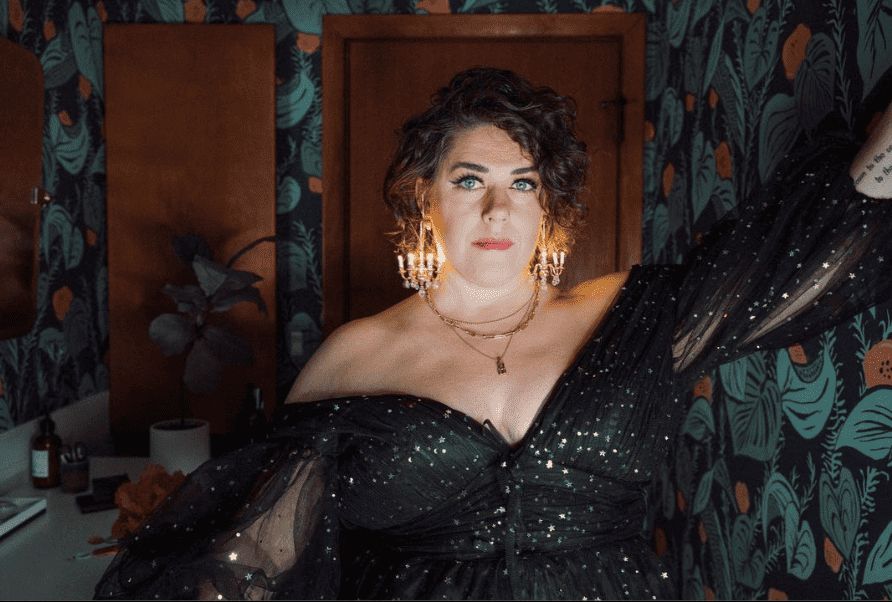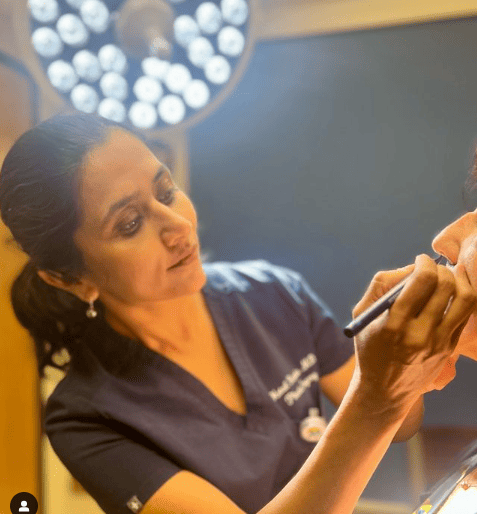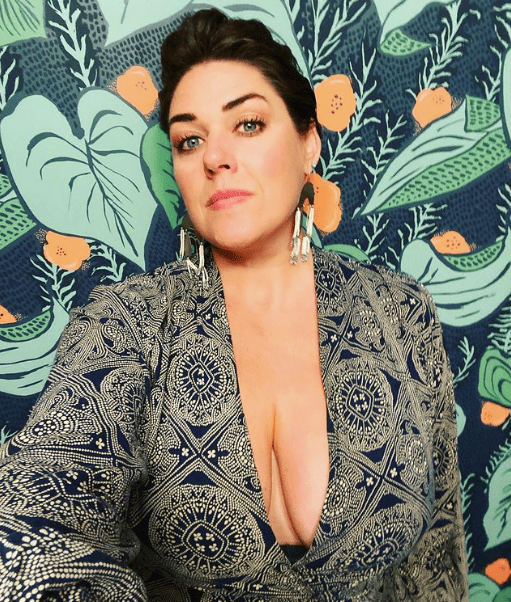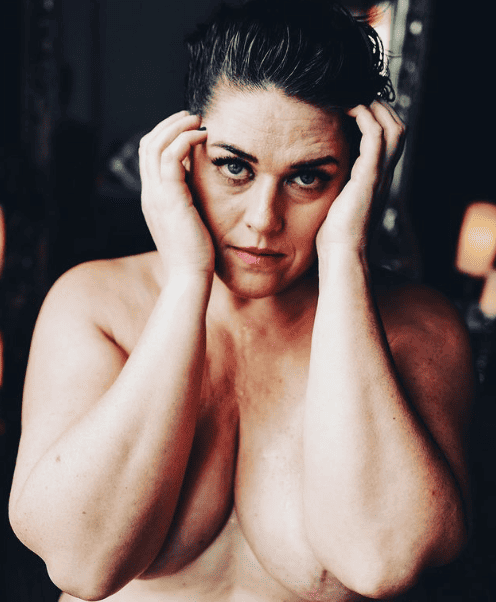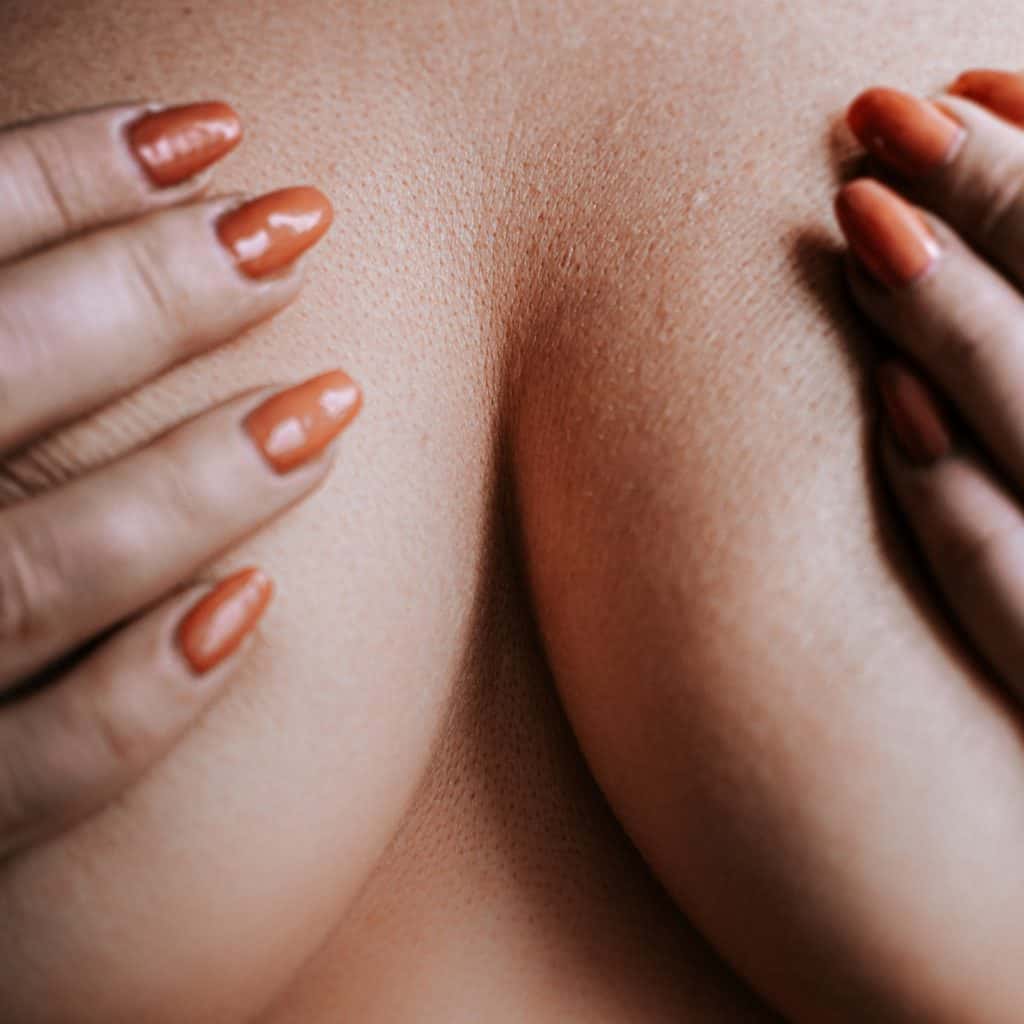While many realtors choose to keep their personal lives under wraps, I’ve never been one to shy away from sensitive topics — consider me an open book, my friends. If you’ve been following me on social media, you already know that about a year and a half ago, I went through a life-changing experience: breast reduction surgery.
No matter your reasons for going under the knife — whether it’s for cosmetic enhancement, prevention, gender affirmation, or simply to elevate your quality of life — Every. Single. Reason. is completely valid. No ifs, ands, or buts.
In my case, I was experiencing pain and discomfort daily, and my quality of life was suffering. Following my procedure and recovery, the amount of relief and freedom from chronic pain is BANANAS — It’s like a whole new, lighter world!
Recently, I had the pleasure of joining forces with my surgeon, the incredible Dr. Hetal Fichadia, for an IG Live sesh where we tackled your burning questions and busted some myths along the way. If you haven’t watched the full IG Live, I highly recommend it — there’s A TON of valuable info that we couldn’t even fit into this blog.
But fear not, my friends! Today, we’re going to dive into some of the highlights and get Dr. Fichadia’s expert takes on topics like BMI, breastfeeding after a breast reduction, scarring, nipple sensitivity, and much, much more.
Strap in! 😉👙
If you’re new here, I’m Lauren Goché — a Portland realtor with a decade of experience backing me up. This means I’ve weathered more than a few market shifts over the course of my career, and specialize in making sure you can make the most of the market for your goals. Read more about me here.
Meet Hetal Fichadia, MD Plastic Surgeon
Allow me to introduce you to the surgical genius behind my handcrafted titties — Dr. Fichadia. She’s a pro at breast augmentation, breast lift, mommy makeovers, facelifts, and tummy tucks. But what makes her journey so cool is that it’s anything but linear.
Growing up in a small town on the stunning west coast of India, as the daughter of two doctors, Dr. Fichadia had an instant love for the operating room: “I still remember being little and thinking, all these people who are not physicians, I think would be so sad. Like, they must just be so unhappy with their lives. Why would you be anything else?”
After completing not one, not two, but THREE medical residencies, Dr. Fichadia found her true passion in plastic surgery. She loved that it wasn’t just about one body part — it was about mastering the principles of surgery and applying it all over the body. She became a pro in all areas of the human form.
You can check out Dr. Fichadia’s awesome work on Instagram @drfichadia and learn more or book a consultation here. Get ready to be blown away by her surgical skills and creativity.
Why Your Weight Shouldn’t Dictate Your Breast Reduction Decision
I was on the search for a breast reduction surgeon for ages — and let me tell you — finding a surgeon who didn’t automatically jump on the fat-shaming bandwagon was a nightmare. Seriously, the last thing you want to hear during a medical consultation is, “Oh, you need to shed some pounds” or someone bringing up your BMI — which is just a messed-up and racist way of measuring weight, by the way.
But then, finally, I met with Dr. Fichadia and she just asked me: “Are you comfortable with your weight as it is? Or do you plan on losing or gaining?”
And I was like, “No, I’m okay.”
And you know what she said? She simply responded, “Awesome. Just so you know, your breasts might change shape if you happen to gain or lose weight.”
No judgment.
No fat-shaming nonsense.
Just an actual discussion about my expectations and desires.
Here’s the thing, my friends. We’ve been conditioned to believe that we need to shed pounds or meet some arbitrary “ideal” weight before even considering a breast reduction. But let me remind you: I’m a human being, and so are you. We have the agency to make decisions about our bodies when it feels right for us, not when society dictates it.
Now I’m not a doctor, so I asked Dr. Fichadia to shed some light on Body Mass Index (BMI). She agrees that BMI is highly eurocentric and flawed, but it’s the only way medical professionals can measure the effect of weight on surgery outcomes. It’s important to note that risks tend to increase with a higher BMI.
Here’s the lowdown on BMI straight from the doctor herself:
“I do use a BMI cut-off for breast reduction surgeries, and it is a BMI greater than 40 – I opt to do these surgeries as same day procedures at a surgery center. We use a BMI limit due to concerns about safety with airway, risk of blood clots, etc. –- which can all be potentially fatal. Lauren was way below this cut-off, so I never had that discussion with her, but with class 1 and 2 obesity, I just have a discussion with the patient about a slightly higher risk of healing issues — and that’s their choice at that point.”
Let’s make no mistake, when you sit down with Dr. Fichadia, she makes it crystal clear that her job is to keep you informed so you’re empowered to make decisions that are right for you:
“It’s up to you to accept that there may be some healing issues or complications during the operation. I can have an open conversation with you about it. You’re an adult, and ultimately, it’s your decision. I can lay out the benefits of breast reduction for you, but it’s important that you fully comprehend and acknowledge the risks involved.”
Can You Still Breastfeed After a Breast Reduction?
Yes, you can! Here’s what Dr. Fichadia has to say:
“In most breast reduction techniques, we reposition the nipple while keeping it attached to some breast tissue. Although we reduce the amount of breast tissue surrounding the milk ducts, it is still possible for women to breastfeed as long as the rest of the breast ductal system is functioning properly — However, you may need to supplement with additional breast milk.”
And what if you already had difficulties breastfeeding?
“I like to emphasize that even among women who haven’t had breast reduction, there is a proportion who experience difficulties with breastfeeding. So if you fall into that category, it’s possible that you may still encounter challenges. However, if you were able to breastfeed before undergoing the reduction surgery and then had another child, you can certainly breastfeed again. It’s just that you may not produce the same amount of milk as you did before or might need some supplementation.”
So it’s definitely possible to still breastfeed after a reduction, it just might require some extra supplementation — but hey, that could be the case for any breast feeding person, with or without a breast reduction.
Recovery Time and Sleeping on Your Back
It took me around a year and a half to fully recover. I won’t sugarcoat it, the first few days were rough. As someone who doesn’t have a super physical job, I was back at my computer, rocking the T-Rex arms within 3 to 4 days. By the 10-day mark, I started going out of the house, taking small steps towards my normal routine (albeit with extra caution). And after 2 weeks, I felt like I was slowly reclaiming my life.
Now there’s one thing about recovery that’s a real pain — learning to sleep on your back. It’s like learning a whole new skill. Dr. Fichadia has some wisdom to share on this matter:
“I find that most patients generally feel better sleeping on their back in the beginning because it allows the scars and incisions to heal. However, I’ve noticed that some patients can start slowly shifting to their side earlier than two months, using pillows for comfort. It’s important to be mindful of any soreness at the site, as you don’t want to aggravate it. For the first two or three weeks, it’s helpful to be on your back so you’re not putting pressure on the incisions.”
By the way, I’ve already got a breast reduction blog where I spill all the tea on my pillow game — Trust me, it’s an art form! So shoot me a DM on Insta and I’ll send you the password (Sadly, I had to password protect it… There are a lot of creeps out there!)
To Drain or Not to Drain?
I got my first hint that Dr. Fichadia was a certified badass when I asked about using drains and she replied, “drains? That’s so old school”. For those of you who are unfamiliar, surgical drains are those pesky tubes that get inserted into your breast tissue after surgery to help drain excess fluid — and they’re no fun.
But here’s the scoop: Dr. Fichadia explained why she opts to skip the drains for most of her patients:
“Most recent studies have shown that drains don’t really make a difference in either fluid buildup or reducing the risk of bleeding. What drains may help with in the beginning is swelling, but over time that swelling gets absorbed by your body naturally — and most patients when they think about their surgeries, say that drains are the worst part.”
Now there are certain cases Dr. Fichadia may consider using drains — and when is that, you may ask? — Well, it’s typically with patients who undergo really large reductions, around the ballpark of 3 pounds per side. When there’s a significant amount of empty space created, that’s where the drains might make an appearance.
Why Some People Get Worse Scarring and What You Can Do About It
When it comes to scarring after breast reduction surgery, there are two key components. The first is the surgical technique — You want to make sure your surgeon does multiple layers of deep sutures to promote optimal healing. The second factor is genetics… Unfortunately, we can’t rewrite our genetic code (yet), so some aspects of scarring are out of our control — But hey, don’t let that dampen your spirits, there’s still plenty you can do to enhance your healing journey.
Here’s what my surgeon recommends to improve your scarring:
- Silicone tape: Brands like ScarAway can help flatten out any scarring, make them smoother, fade away, and blend in more with your skin’s natural color and texture — It even works on older scars.
- Steroid injections: If your scars start acting up, getting raised, itchy, or downright painful, steroid injections can help calm those rebellious scars and bring them back in line — I’ve had this done and let me tell ya, it works!
- Microneedling: Perfect for any small parts of your scarring that need some extra TLC. It’s a newer treatment that uses tiny needles to stimulate your skin’s natural healing response.
- Scar camouflage tattoo: This is done by tattooing the scar to match your skin tone so it’s less visible. If you want to look more into this option, Dr. Fichadia recommends DAELA Cosmetic Tattoo — You can read more about their camouflage tattoo services here.
Advice for People Who Smoke
I mean, point-blank, you need to stop smoking — Sorry folks, but I’m super anti-smoking all the time. I grew up that way.
Dr. Fichadia outlined two key risks related to smoking and breast reduction surgery:
- First off, smoking decreases blood flow to the healing tissues, including the skin. And here’s the thing about nipple repositioning: when the nipple is moved higher on the breast, it already faces a challenge with reduced blood circulation during the healing process. Smoking further worsens this situation, increasing the risk of complications like nipple necrosis and skin discoloration.
- During breast reduction surgery, they make a T-shaped incision with a vertical line and a horizontal line where they intersect. Those corners of the incisions are already a bit further away from where the blood flows naturally. And here’s the kicker: smoking messes with your blood flow, so if you have an open wound, smoking can seriously slow down the healing process.
Here’s what she has her smoking patients do in order to avoid these risks:
“I tell patients I will do a serum nicotine test beforehand to make sure that there is no nicotine in their system AND they have to be off of any nicotine products for about six weeks before and six weeks after their surgery.”
— I know that sounds awful to any smokers out there, but trust me, it’s better than having necrosis and your nipple falling off.
Let’s Talk about Nipple Sensitivity…
It’s been about a year and a half since my breast reduction surgery, and guess what? Some of that nipple sensitivity has made a comeback.
Now, here’s the thing: for some people, nipple sensitivity is a big deal in the bedroom. But for me? Nahhh, it never really played a starring role. So the fact that I’ve got less than 50% of the sensitivity I had before doesn’t really bother me much.
Now, here’s a fun fact: nerves are sloooow to regenerate. So after 18 months, Dr. Fichadia said that it’s unlikely I’ll regain any more sensation — and I’m cool with that. Here’s what she has to say about the topic:
“As a standard practice, we always have this discussion with our patients in advance. It allows us to address any concerns and ensure that everyone is on the same page. While there are techniques that can help preserve nipple sensation to some extent, it’s important to recognize that all breast reductions have the potential to affect nipple sensation. In certain cases, such as with a significant reduction or low-hanging nipples, a technique called free nipple grafts may be necessary. This procedure involves detaching and reattaching the nipples in a different position and can result in a permanent loss of sensation.”
That’s All for Now, Bosom Buddies!

I hope you had a titillating time during this Q&A and got a good dose of boob wisdom. If you’re hungry for more info, check out my blog filled with recovery tips that will keep you and your twins feeling fabulous — Just send me a DM on Instagram for the password.
Remember, my fellow bosom buddies, you’re not alone on this journey, and together we can navigate the ups and downs with confidence. Stay fabulous, stay informed, and feel free to reach out anytime. Cheers!
And if you or someone you know is looking to buy or sell a home, get the support you need in Portland’s real estate market by working with me and my lovely team. Let’s get started — get in touch with us here.

